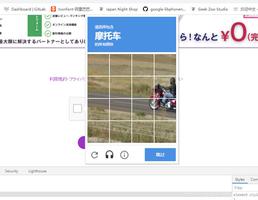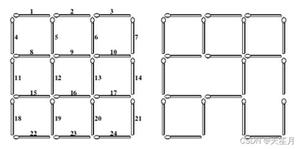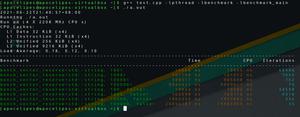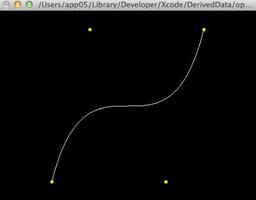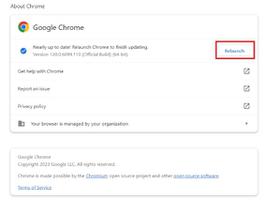从Google Cloud Storage流式传输文件
这是从Google Cloud Storage下载文件的代码:
@Overridepublic void write(OutputStream outputStream) throws IOException {
try {
LOG.info(path);
InputStream stream = new ByteArrayInputStream(GoogleJsonKey.JSON_KEY.getBytes(StandardCharsets.UTF_8));
StorageOptions options = StorageOptions.newBuilder()
.setProjectId(PROJECT_ID)
.setCredentials(GoogleCredentials.fromStream(stream)).build();
Storage storage = options.getService();
final CountingOutputStream countingOutputStream = new CountingOutputStream(outputStream);
byte[] read = storage.readAllBytes(BlobId.of(BUCKET, path));
countingOutputStream.write(read);
} catch (Exception e) {
e.printStackTrace();
} finally {
outputStream.close();
}
}
这行得通,但是这里的问题是,在流回此方法的客户端之前,它必须先缓冲所有字节。这会导致很多延迟,尤其是当存储在GCS中的文件很大时。
有没有一种方法可以从GCS获取文件并将 ,这里的OutputStream是用于Servlet的。
回答:
只是为了澄清一下,您需要一个OutputStream还是一个InputStream?一种查看方式是,将Google Cloud
Storage对象中存储的数据作为文件存储,并且您有一个InputStream可以读取该文件。如果可行,请继续阅读。
Storage API中没有提供InputStream或的现有方法OutputStream。但是Cloud
Storage客户端库中有2个API,它们公开了一个ReadChannel对象ReadableByteChannel(从Java
NIO API 扩展)。
ReadChannel reader(String bucket, String blob, BlobSourceOption... options);ReadChannel reader(BlobId blob, BlobSourceOption... options);
一个简单的例子(摘自StorageSnippets.java):
/** * Example of reading a blob's content through a reader.
*/
// [TARGET reader(String, String, BlobSourceOption...)]
// [VARIABLE "my_unique_bucket"]
// [VARIABLE "my_blob_name"]
public void readerFromStrings(String bucketName, String blobName) throws IOException {
// [START readerFromStrings]
try (ReadChannel reader = storage.reader(bucketName, blobName)) {
ByteBuffer bytes = ByteBuffer.allocate(64 * 1024);
while (reader.read(bytes) > 0) {
bytes.flip();
// do something with bytes
bytes.clear();
}
}
// [END readerFromStrings]
}
您还可以使用该newInputStream()方法来包装一个InputStream比ReadableByteChannel。
public static InputStream newInputStream(ReadableByteChannel
ch)
即使您需要使用OutputStream,也应该能够将InputStream或更好的ReadChannel对象中的数据复制到中OutputStream。
回答:
将此示例运行为: PROGRAM_NAME <BUCKET_NAME> <BLOB_PATH>
import java.io.IOException;import java.nio.ByteBuffer;
import java.nio.channels.Channels;
import java.nio.channels.WritableByteChannel;
import com.google.cloud.ReadChannel;
import com.google.cloud.storage.Bucket;
import com.google.cloud.storage.BucketInfo;
import com.google.cloud.storage.Storage;
import com.google.cloud.storage.StorageOptions;
/**
* An example which reads the contents of the specified object/blob from GCS
* and prints the contents to STDOUT.
*
* Run it as PROGRAM_NAME <BUCKET_NAME> <BLOB_PATH>
*/
public class ReadObjectSample {
private static final int BUFFER_SIZE = 64 * 1024;
public static void main(String[] args) throws IOException {
// Instantiates a Storage client
Storage storage = StorageOptions.getDefaultInstance().getService();
// The name for the GCS bucket
String bucketName = args[0];
// The path of the blob (i.e. GCS object) within the GCS bucket.
String blobPath = args[1];
printBlob(storage, bucketName, blobPath);
}
// Reads from the specified blob present in the GCS bucket and prints the contents to STDOUT.
private static void printBlob(Storage storage, String bucketName, String blobPath) throws IOException {
try (ReadChannel reader = storage.reader(bucketName, blobPath)) {
WritableByteChannel outChannel = Channels.newChannel(System.out);
ByteBuffer bytes = ByteBuffer.allocate(BUFFER_SIZE);
while (reader.read(bytes) > 0) {
bytes.flip();
outChannel.write(bytes);
bytes.clear();
}
}
}
}
以上是 从Google Cloud Storage流式传输文件 的全部内容, 来源链接: utcz.com/qa/416657.html

